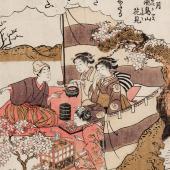Didier Conrad
The new Asterix comic "Asterix and the Missing Scroll" has just been published. Since 2013, the Franco-Swiss illustrator Didier Conrad and the lyricist Jean-Yves Ferri are responsible for the Asterix series. What characterizes Didier Conrad and what are changes that result from the classics of Albert Uderzo. We introduce the drawer Conrad.
The drawer was born in Marseille in 1959 and he was already well-known for his series "Les Innommables" in the eighties. After many publications with different partners and contracts as "visual developer" for animated films in America, the exceptional drawer was announced as the successor for Uderzo for the Asterix comics in 2012.
It all started with the draftsman Albert Uderzo, who published the first Asterix comic books in 1959. Uderzo withdrew from the corporate responsibility for the marketing of Asterix in 2008. In the year 2013, the new team and Conrad Ferri then published their first Asterix release named "Asterix and the Picts". In implementing this release Uderzo let the new team freedom to the greatest possible extent, but he was always involved as observer and advisers. That time Uderzo`s signature still stood on the cover picture next to one of Didier Conrad. On the new comic Didier signed alone - and rightly so!
Conrad and Ferri breathe life into the new Asterix comics that are inspired by current political and social issues. This, for example, becomes clear when in the new release the "colporteur" Polemix appears, who obviously got the traits of WikiLeaks founder Julian Assange. Or the names used are unique: "Datenflus" or "Antivirus" are Roman palace guards in the comic. Of course, classic moments are equally serviced by Conrad, as even then by Uderzo. However, Conrad puts emphasis on a new, fresh look with his new-age jokes in the Druids forest or in general with the more psychedelic colour scheme. The new book is riddled with up-to-the-minute allusions referring to media criticism, technology and monitoring - which blend in well in the classics.




